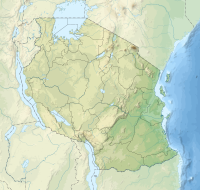웁실론1 칸크리
Upsilon1 Cancri| 관측 데이터 Epoch J2000.0 이쿼녹스 J2000.0(ICRS) | |
|---|---|
| 별자리 | 암 |
| 우측 상승 | 08h 31m 30.51925s[1] |
| 탈위임 | +24° 04′ 51.9890″[1] |
| 겉보기 크기 (V) | +5.694[2] |
| 특성. | |
| 스펙트럼형 | F0 IIIn[3] |
| B-V색지수 | +0.309[2] |
| 아스트로메트리 | |
| 방사 속도 (Rv) | +19.0±4.3km[4]/s |
| 고유 운동 (μ) | RA: −81.36[1]mas/yr Dec.: −44.57[1]mas/yr |
| 시차 (π) | 13.05 ± 0.29[1] 마스 |
| 거리 | 250 ± 6 리 (77 ± 2 pc) |
| 절대치수 (MV) | +1.29[5] |
| 세부 사항 | |
| 미사 | 1.47[6] M☉ |
| 루미도 | 25[5] L☉ |
| 표면 중력 (log g) | 3.51[7] cgs |
| 온도 | 7,240±246[6] K |
| 회전 속도 (v sin i) | 109.2km[7]/s |
| 나이 | 570Myr[6] |
| 기타 지정 | |
| 데이터베이스 참조 | |
| 심바드 | 자료 |
υ1 칸크리에서 라틴어로 표기된 웁실론1 칸크리는 암 별자리에 있는 황백색의 외로운 [3]별의 바이엘 명칭이다.그것은 육안으로 희미하게 보여서, 겉으로 보이는 시각적 크기가 +5.7이다.[2]지구에서 볼 수 있는 연간 시차 변화량 13.05 mas에 근거하여,[1] 이 시스템은 태양으로부터 약 250광년 떨어져 있다.
이 물체는 F0 IIIn의 별 분류를 가지고 있어 F형 거성임을 알 수 있다.[3]'n' 접미사는 빠른 회전으로 인한 '위험한' 흡수선을 나타내며, 109.2km/s의 비교적 높은 예상 회전 속도를 나타낸다.[7]진폭 0.05로 밝기가 달라지는 알 수 없는 유형의 가변성 별이다.[9]이 별은 약 5억[6] 7천만년 된 것으로 추정된 질량이 태양의 1.47배이다[6].평균적으로, 그것은 7,240 K의 유효 온도에서 태양의 광도 25배의[5] 빛을 광권으로부터 방출하고 있다.[6]
참조
- ^ a b c d e f van Leeuwen, F. (2007), "Validation of the new Hipparcos reduction", Astronomy and Astrophysics, 474 (2): 653–664, arXiv:0708.1752, Bibcode:2007A&A...474..653V, doi:10.1051/0004-6361:20078357, S2CID 18759600.
- ^ a b c Høg, E.; et al. (March 2000), "The Tycho-2 catalogue of the 2.5 million brightest stars", Astronomy and Astrophysics, 355: L27–L30, Bibcode:2000A&A...355L..27H, doi:10.1888/0333750888/2862.
- ^ a b c Eggleton, P. P.; Tokovinin, A. A. (September 2008), "A catalogue of multiplicity among bright stellar systems", Monthly Notices of the Royal Astronomical Society, 389 (2): 869–879, arXiv:0806.2878, Bibcode:2008MNRAS.389..869E, doi:10.1111/j.1365-2966.2008.13596.x, S2CID 14878976.
- ^ de Bruijne, J. H. J.; Eilers, A.-C. (October 2012), "Radial velocities for the HIPPARCOS-Gaia Hundred-Thousand-Proper-Motion project", Astronomy & Astrophysics, 546: 14, arXiv:1208.3048, Bibcode:2012A&A...546A..61D, doi:10.1051/0004-6361/201219219, S2CID 59451347, A61.
- ^ a b c Anderson, E.; Francis, Ch. (2012), "XHIP: An extended hipparcos compilation", Astronomy Letters, 38 (5): 331, arXiv:1108.4971, Bibcode:2012AstL...38..331A, doi:10.1134/S1063773712050015, S2CID 119257644.
- ^ a b c d e f David, Trevor J.; Hillenbrand, Lynne A. (2015), "The Ages of Early-Type Stars: Strömgren Photometric Methods Calibrated, Validated, Tested, and Applied to Hosts and Prospective Hosts of Directly Imaged Exoplanets", The Astrophysical Journal, 804 (2): 146, arXiv:1501.03154, Bibcode:2015ApJ...804..146D, doi:10.1088/0004-637X/804/2/146, S2CID 33401607.
- ^ a b c Schröder, C.; Reiners, Ansgar; Schmitt, Jürgen H. M. M. (January 2009), "Ca II HK emission in rapidly rotating stars. Evidence for an onset of the solar-type dynamo" (PDF), Astronomy and Astrophysics, 493 (3): 1099–1107, Bibcode:2009A&A...493.1099S, doi:10.1051/0004-6361:200810377
- ^ "ups01 Cnc". SIMBAD. Centre de données astronomiques de Strasbourg. Retrieved 2017-06-10.
- ^ Adelman, S. J. (October 2000), "On the Variability of A3-F0 Luminosity Class III-V Stars", Information Bulletin on Variable Stars (4969): 1, Bibcode:2000IBVS.4969....1A.


